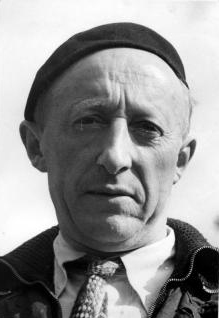Hendrik Chabot
Chabot became interested in German Expressionism. In 1922 he visited museums in several German cities and in Vienna. Around this time he joined the Rotterdam-based artists’ association De Branding and made his first sculptures. In 1933 he joined the Rotterdam-based group R33, which existed until 1940.
During the Second World War, Chabot’s studio was hit by a German bomb and many of his works were destroyed. The misery he suffered in the war was expressed in his sombre choice of subjects and his palette. After the war he again began to use brighter colours.
Chabot died in 1949. There were several memorial exhibitions of his work, which was highly prized. In 1955 Museum Boijmans Van Beuningen bought a collection of works by Chabot. However, in the mid-1960s interest in his work dwindled. There was a renewal of interest in the 1980s, which led to the first balanced view of his entire oeuvre.
